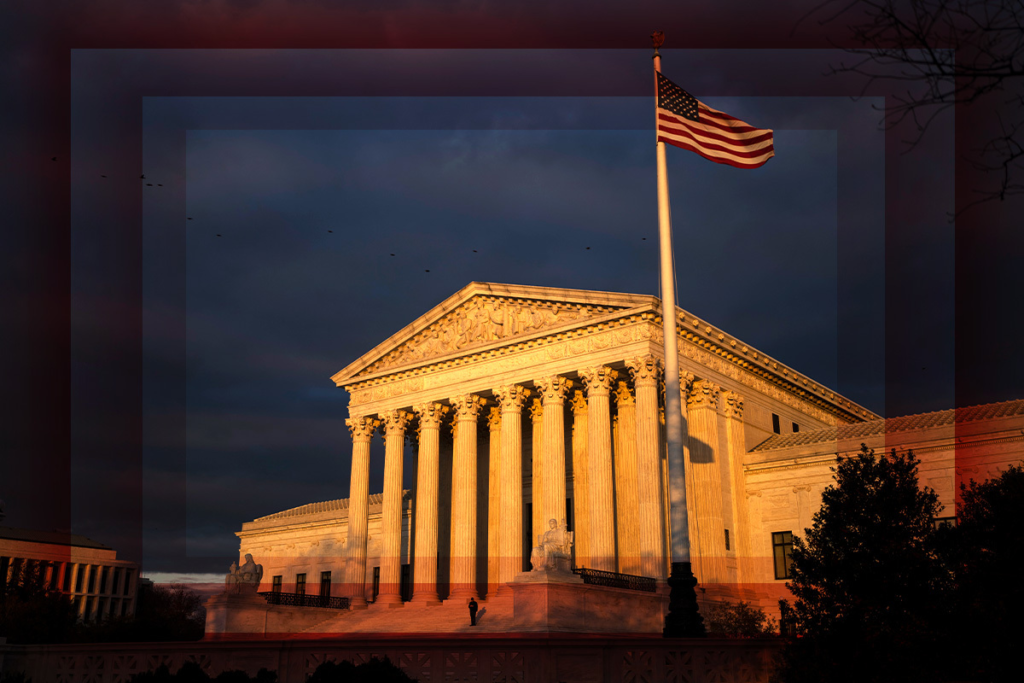There’s a sleeper case on the Supreme Court’s docket that could blow a gaping hole in the social safety net and give states leeway to neglect or end care for tens of millions of the most vulnerable Americans.
“This case is to Medicaid what Dobbs was to abortion,” Sara Rosenbaum, professor of health law and policy at George Washington University’s school of public health, told TPM.
And it’s not just Medicaid, though the program enrolling nearly 90 million Americans is the biggest one at risk. This case could leave all of those who depend on federally funded, state-administered programs — think SNAP (formerly known as food stamps) or WIC, which helps low-income pregnant women and mothers with young children buy food — without any recourse, should states stop providing the benefits they’re required to give.
The echoes of Dobbs are eerie.
Here too, the Court’s decision to take up the case surprised and alarmed experts in equal measure. There was no circuit court split, no raging lower court controversy to settle. It was a fairly run-of-the-mill case, not unlike hundreds that had come before. A county in a red state, eyeing the right-wing composition of the Court, calculated that the time was ripe to lodge a bigger ask, to use a pedestrian vehicle to do away with a broader right it opposes. And the justices quietly took it up — dragging behind them a paper trail peppered with their inclination to overturn 50 years of precedent.

The Case
The case comes from a nursing home run by a municipal corporation owned by Marion County, Indiana. That’s key: while many nursing homes are privately owned, this one is state-run.
The family of a patient who was suffering from dementia alleges that he was given a slew of unnecessary medications and improperly transferred to different facilities hours away. So they sued, arguing that his treatment violated the Federal Nursing Home Reform Act, which establishes the rights of residents of nursing homes that receive Medicaid and Medicare funding.
But the case, Health and Hospital Corp. of Marion County, Indiana v. Talevski, quickly became much bigger than the allegedly poor treatment of the late Gorgi Talevski.
The county-run corporation, sensing an opportunity, tacked on a bigger ask than the initial dispute over nursing home protections. It asked the Supreme Court to reexamine and nix altogether the pathway that people participating in these federal spending programs can use to sue when their rights are violated.
If the Supreme Court’s conservative majority bites, experts warn, it could have implications far beyond nursing homes.
If a state decided to, say, keep pocketing Medicaid funding but to abruptly stop providing coverage without any due process, those neglected beneficiaries would have recourse. They could sue in federal court under Section 1983, part of a civil rights statute passed in 1871. At the time, it was enacted as a federal remedy against officials who terrorized newly freed slaves under the color of state law. It remains a critical pathway for enforcing constitutional rights, and is frequently used in cases of police brutality.
A century after its passage, Section 1983 protections were interpreted to apply to rights under laws too — not just constitutional ones. In the next two decades, a body of court cases squarely applied it to Medicaid.
“For 50 years now, the Supreme Court has recognized that people can sue under 1983 if their rights are violated under federal law, including spending clause statutes like Medicaid or food stamps,” Tim Jost, professor of law, emeritus, at the Washington and Lee University School of Law, told TPM. “This goes back even beyond Roe.”
